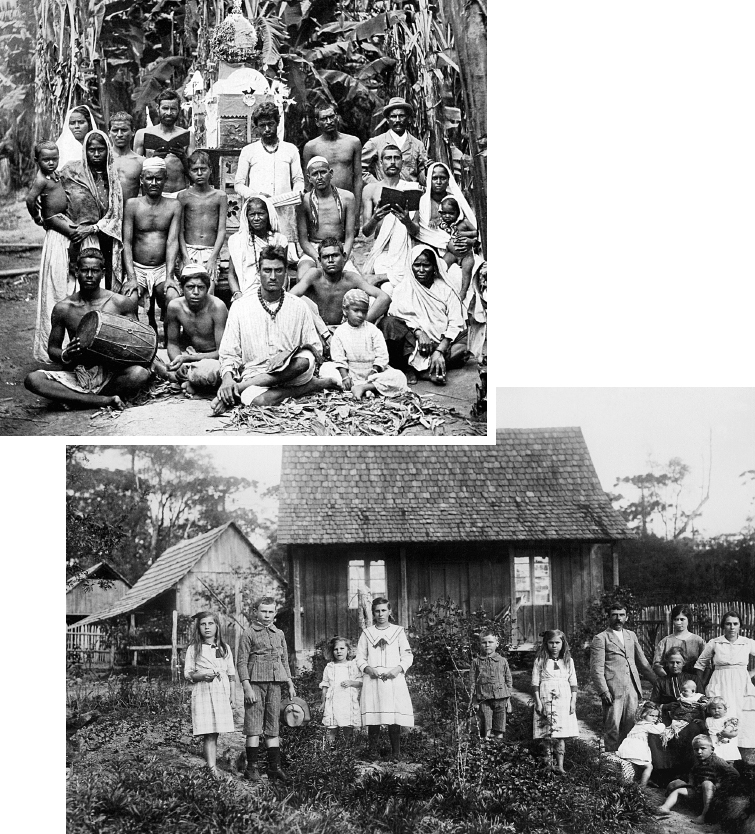What factors shaped immigration patterns to the Americas? How did immigrants shape — and how were they shaped by — their new settings?
DDURING THE LATE NINETEENTH and early twentieth centuries unprecedented numbers of people from Europe, Asia, and the Middle East settled across North and South America. The largest wave of immigrants — some 28 million between 1860 and 1914 — settled in the United States. Another 8 million had settled in Argentina and Brazil by 1930. This cycle of immigration was a product of liberal political and economic reforms that abolished slavery, established stable political systems, and created a framework for integrating immigrants as factory and farm laborers.

Immigrants in the Americas Indian immigrants at a Jamaican banana plantation (top) and German immigrants in Brazil (bottom) at the turn of the twentieth century. Immigrants brought new cultures and worldviews to the Americas. (Jamaica: Picturesque Jamaica, by Adolphe Duperly & Son, England, circa 1905/Brazil: © The Print Collector/Heritage/The Image Works; © SZ Photo/Scherl/The Image Works)